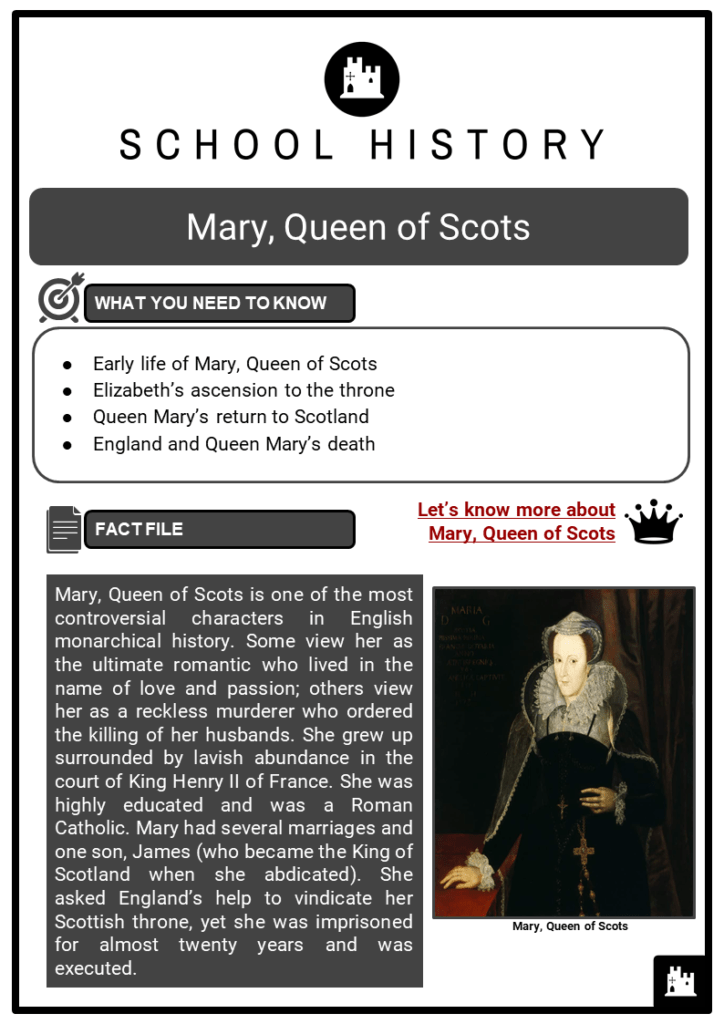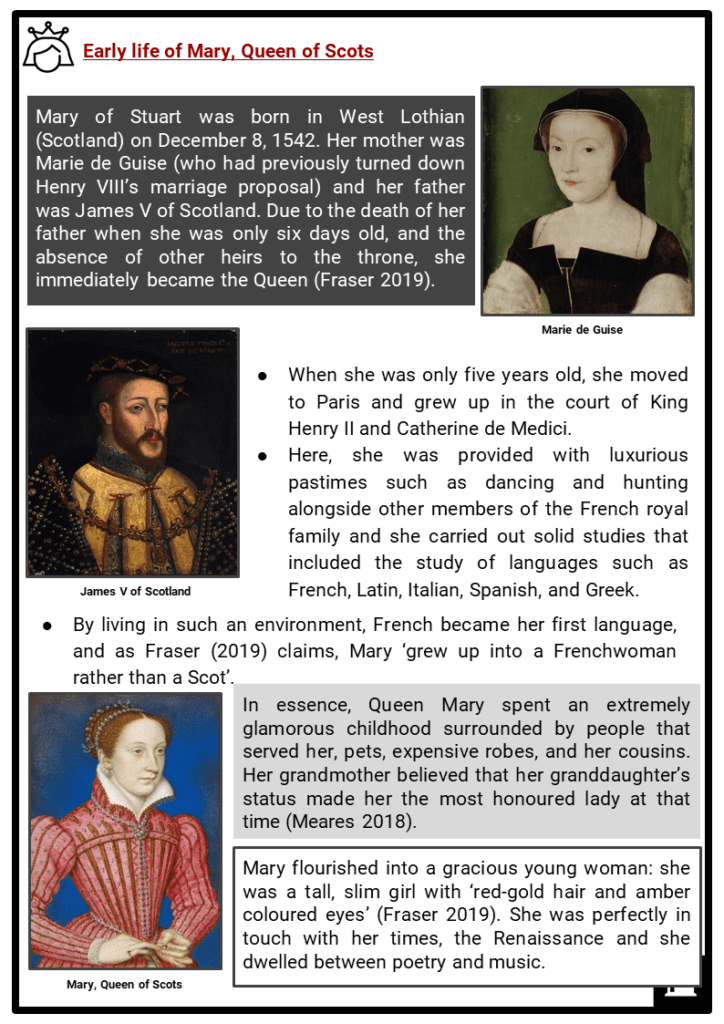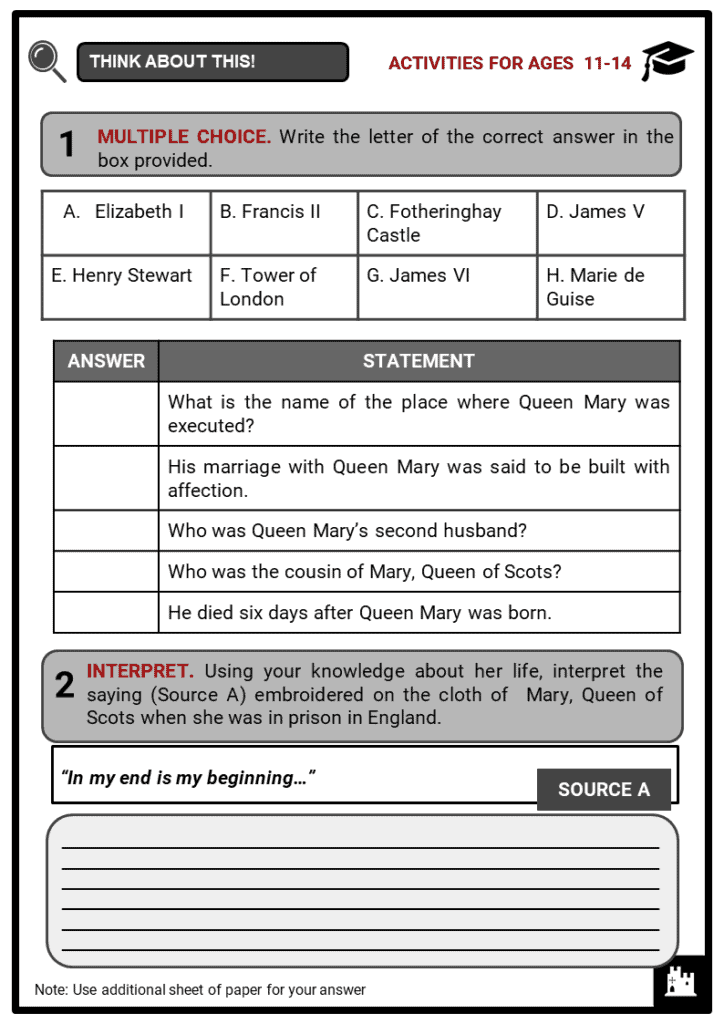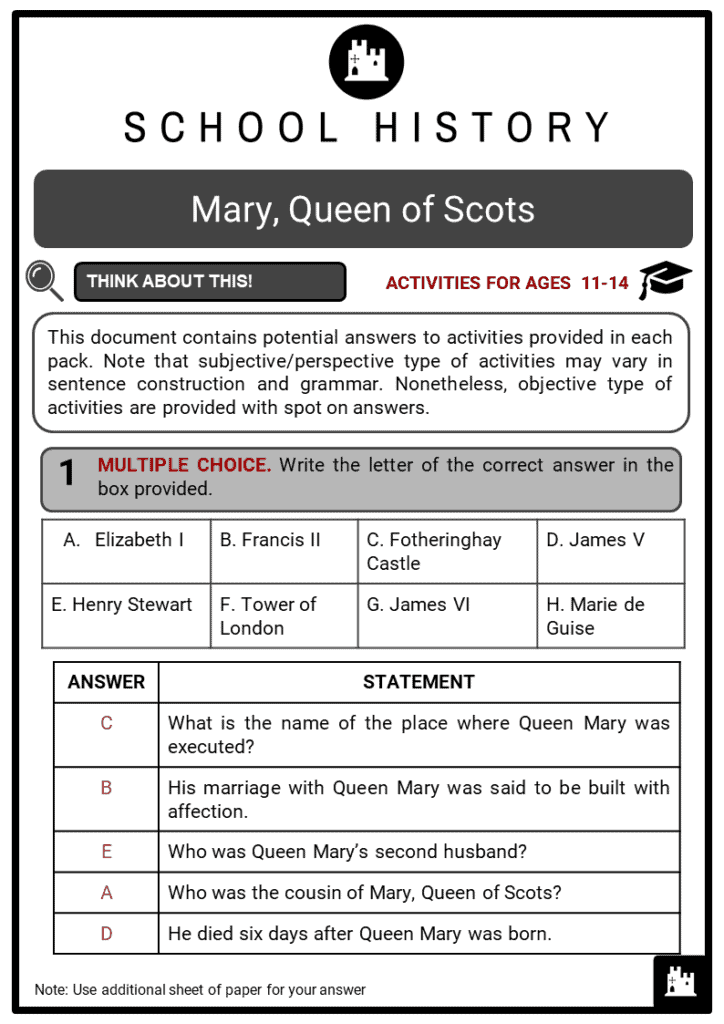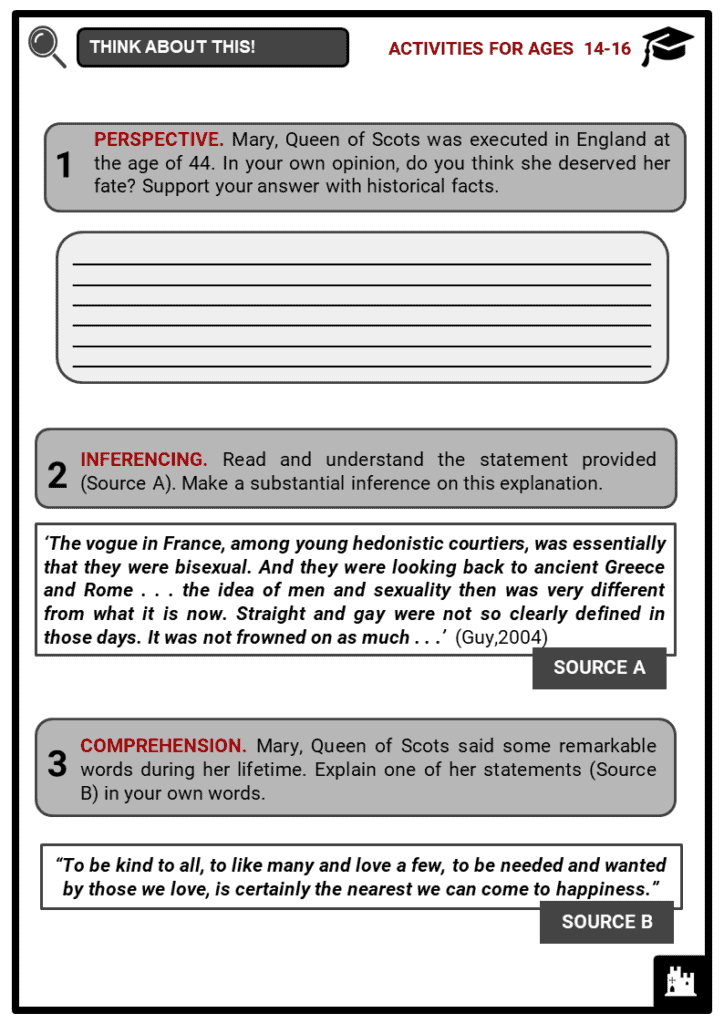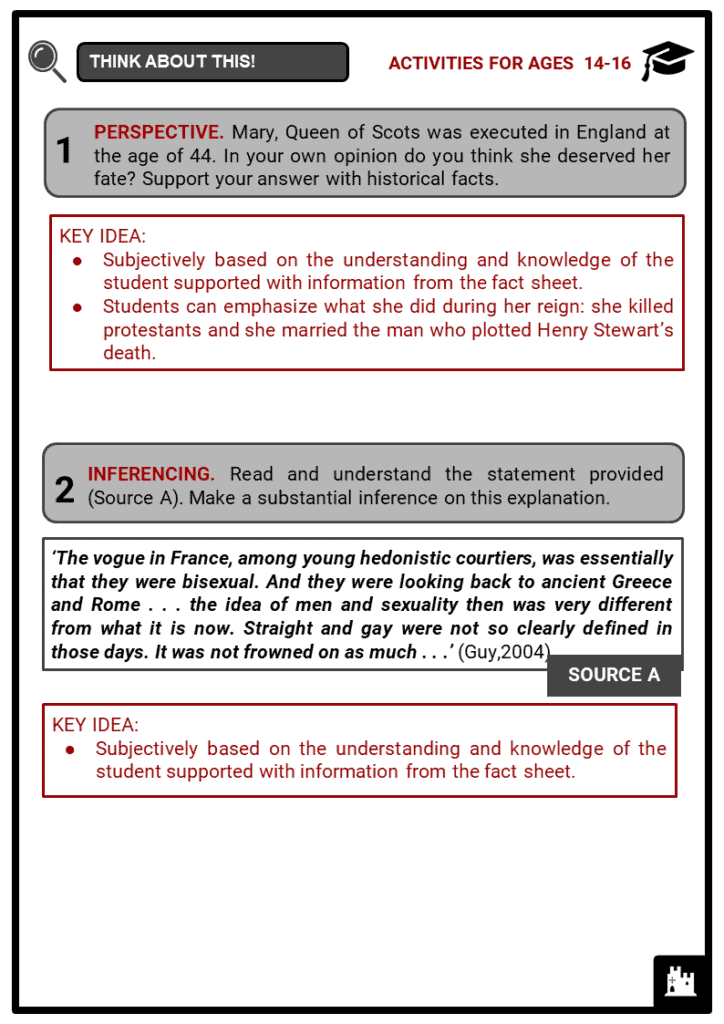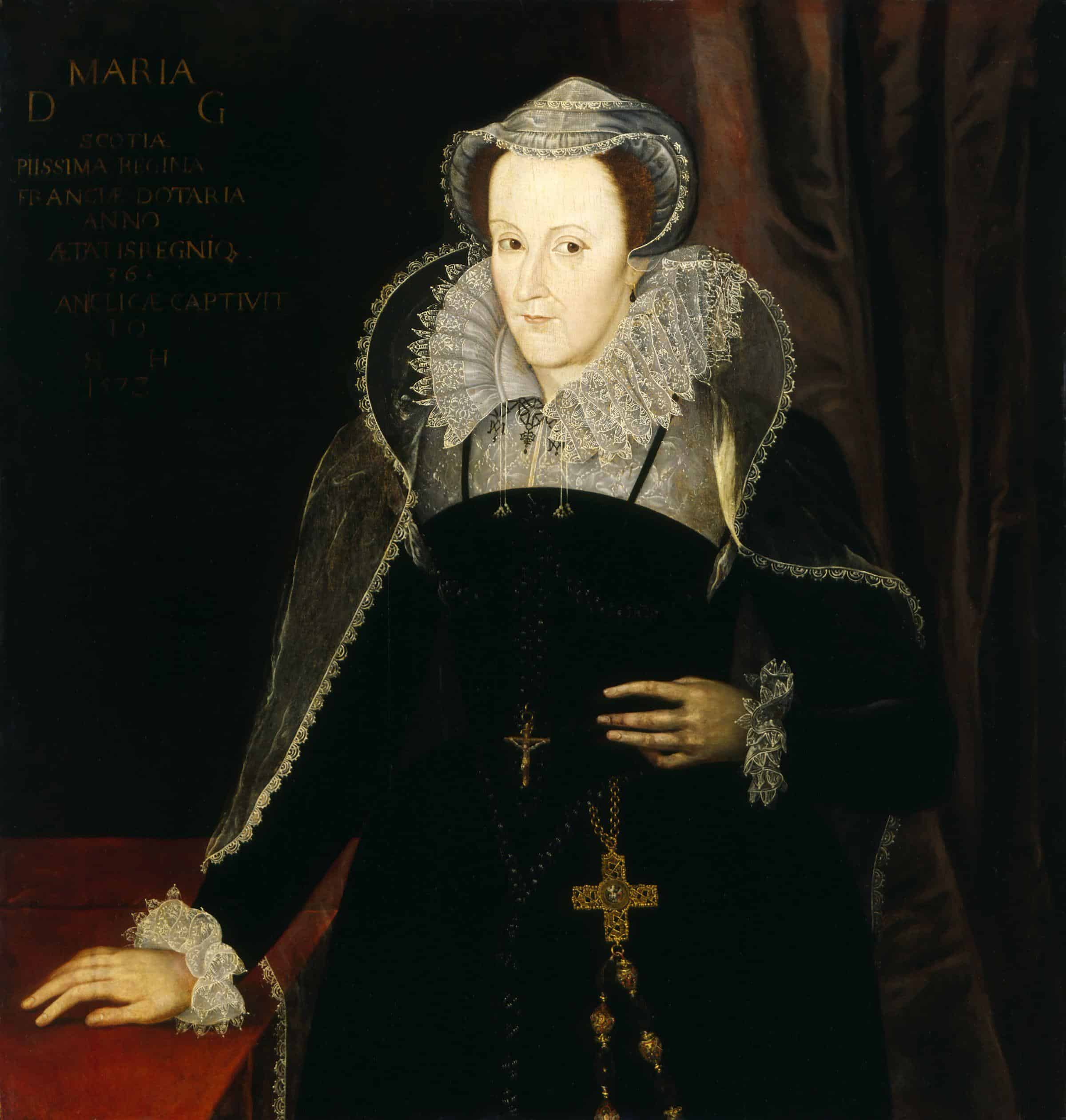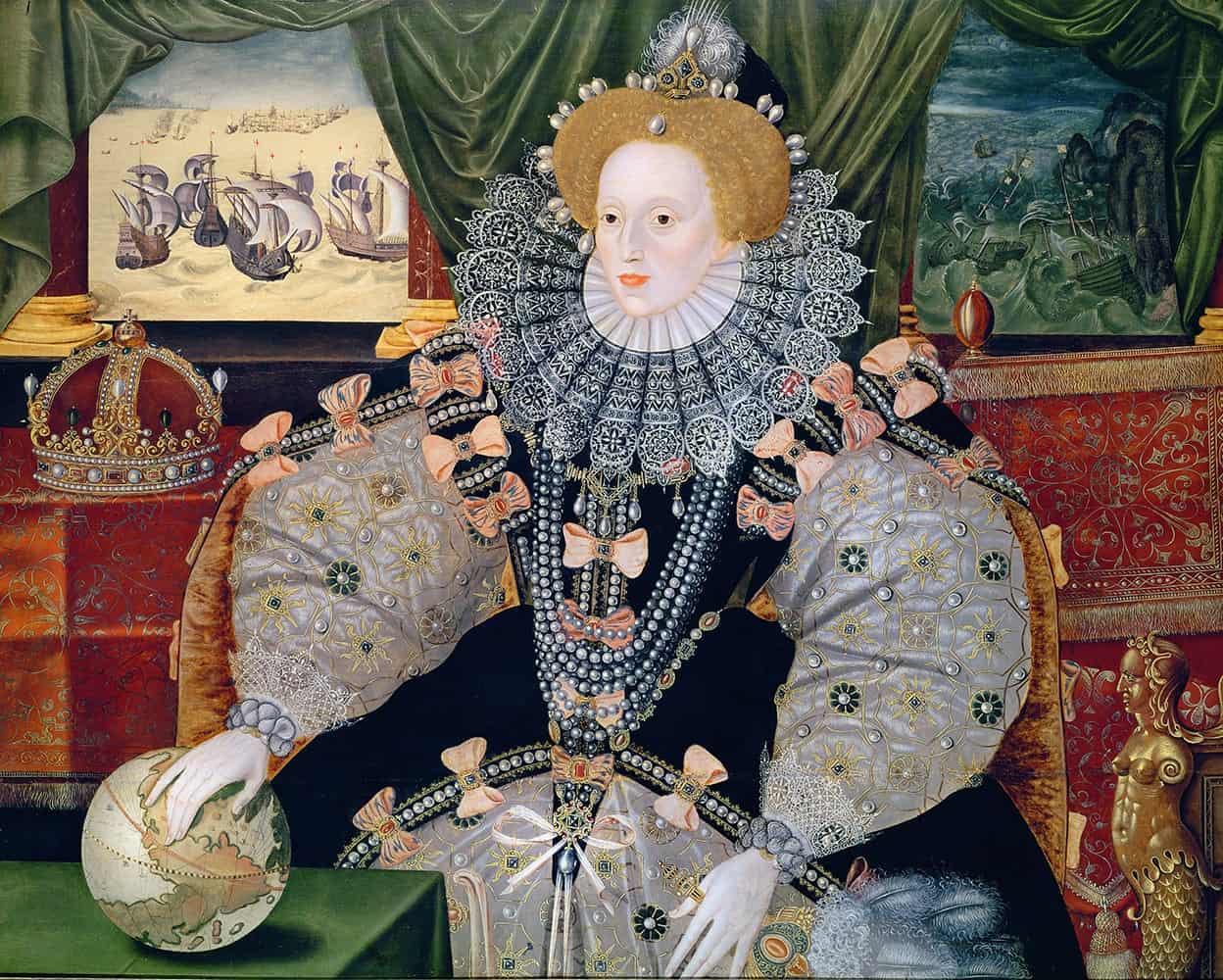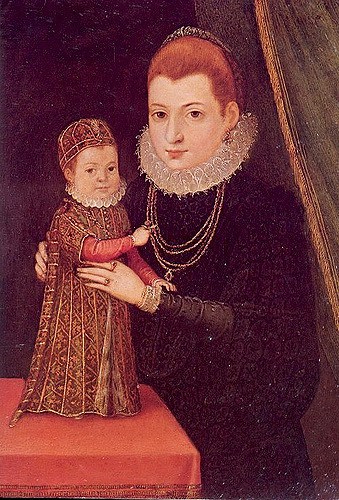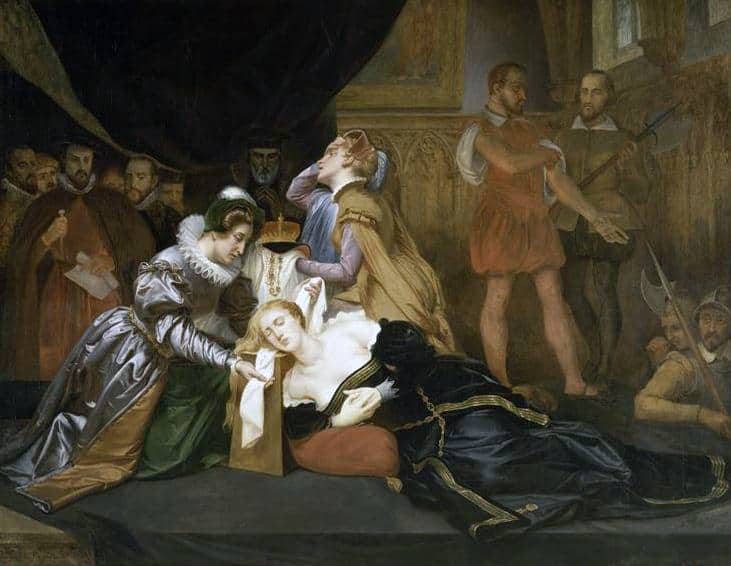Download Mary Queen of Scots Worksheets
Do you want to save dozens of hours in time? Get your evenings and weekends back? Be able to teach Queen Mary of Scots to your students?
Our worksheet bundle includes a fact file and printable worksheets and student activities. Perfect for both the classroom and homeschooling!
Table of Contents
Add a header to begin generating the table of contents
Summary
- Early life of Mary, Queen of Scots
- Elizabeth’s ascension to the throne
- Queen Mary’s return to Scotland
- England and Queen Mary’s death
Key Facts And Information
Let’s know more about Mary, Queen of Scots
- Mary, Queen of Scots is one of the most controversial characters in English monarchical history. Some view her as the ultimate romantic who lived in the name of love and passion; others view her as a reckless murderer who ordered the killing of her husbands. She grew up surrounded by lavish abundance in the court of King Henry II of France. She was highly educated and was a Roman Catholic. Mary had several marriages and one son, James (who became the King of Scotland when she abdicated). She asked England’s help to vindicate her Scottish throne, yet she was imprisoned for almost twenty years and was executed.
Early life of Mary, Queen of Scots
- Mary of Stuart was born in West Lothian (Scotland) on December 8, 1542. Her mother was Marie de Guise (who had previously turned down Henry VIII’s marriage proposal) and her father was James V of Scotland. Due to the death of her father when she was only six days old, and the absence of other heirs to the throne, she immediately became the Queen (Fraser 2019).
- When she was only five years old, she moved to Paris and grew up in the court of King Henry II and Catherine de Medici.
- Here, she was provided with luxurious pastimes such as dancing and hunting alongside other members of the French royal family and she carried out solid studies that included the study of languages such as French, Latin, Italian, Spanish, and Greek.
- By living in such an environment, French became her first language, and as Fraser (2019) claims, Mary ‘grew up into a Frenchwoman rather than a Scot’.
- In essence, Queen Mary spent an extremely glamorous childhood surrounded by people that served her, pets, expensive robes, and her cousins. Her grandmother believed that her granddaughter’s status made her the most honoured lady at that time (Meares 2018).
- Mary flourished into a gracious young woman: she was a tall, slim girl with ‘red-gold hair and amber coloured eyes’ (Fraser 2019). She was perfectly in touch with her times, the Renaissance and she dwelled between poetry and music.
- King Henry II said, ‘the little Queen of Scots is the most perfect child that I have ever seen’ (Meares 2018).
- At the age of seventeen, Queen Mary married Francis, who was only fifteen.
- Francis was the eldest son of the French monarchs Catherine and Henry. Although the marriage between the two teenagers was arranged for political ambitions, it is believed that Mary had much affection towards Francis.
- However, her marriage came to an end when Francis died only a year later.
Elizabeth’s ascension to the throne
- In November 1558, Elizabeth became the Queen of England.
- Her legitimacy to the throne was much debated. In fact, she was the daughter of Henry VIII and Anne Boleyn.
- Mary, Queen of Scots was a direct descendant of the Tudor family. In fact, her grandmother was Henry VIII’s sister.
- It is worth noting that Henry VIII had ended his marriage with Anne, therefore the validity of such succession to the throne was put into question.
- As a consequence, Mary was regarded as the person that should have succeeded to the throne, since she possessed Tudor blood.
- Being aware of the huge power that the throne of England could provide them with, Mary’s father-in-law, Henry II, ‘claimed the English throne on her behalf’ (Fraser 2019).
- Moreover, there was the suspicion that Elizabeth I wanted to overthrow Mary’s government and as a consequence was imprisoned in the Tower of London for about two weeks (also Elizabeth’s mother, Anne Boleyn, had been locked up in the same place) (Miller 2018).
- Subsequently, she was forced to endure ‘house arrest for almost a year [and] she feared for her life’ (Miller 2018; citing Guy).
- Mary’s pretension to the throne resulted in Elizabeth’s hostility.
Queen Mary's return to Scotland
- The de Guise family, having lost their prominence, encouraged Mary to make her way back to Scotland so she could rule (Lewis 2019).
- In August 1561, upon her return to Scotland, Queen Mary gave the impression of being an unfit, foreign and was French and she was not accustome‘alien’ queen for Scotland: in fact, her upbringing d to dealing with the problems that Scotland was facing.
- During her first years of ruling, Mary was assisted by her half-brother James, 1st Earl of Moray.
- Her new marriage with her cousin Henry Stewart, Earl of Darnley (belonging to the Lennox family), announced the start of her misfortunes.
- Their union was dictated by love and it was not a political arrangement. However, Henry Stewart was of Tudor descent (Queen Elizabeth highly disagreed with their marriage), and her half-brother James was jealous of his brother-in-law’s family rising to power (Fraser 2019).
- Henry was not admired and revered: he was considered ‘weak, vicious, and ambitious’ (Fraser 2019).
- After seeing her husband slaughtering her ‘secretary and confident’, David Rizzio, she realised that Henry aimed to kill her (Fraser 2019).
- Moreover, it is speculated that Rizzio, Darnley, and Mary were in the midst of a love triangle.
- Rizzio had sexual relations with Darnley and it is claimed that Mary’s newborn, James, was the result of her and Rizzio’s union (Miller 2018).
- Guy explains, ‘Rizzio was Northern Italian, and had been brought up in courts in France […] The vogue in France, among young hedonistic courtiers, was essentially that they were bisexual. And they were looking back to ancient Greece and Rome . . . the idea of men and sexuality then was very different from what it is now. Straight and gay were not so clearly defined in those days. It was not frowned on as much . . . and Mary was also a very tolerant person.’
- Perhaps it was Darnley’s jealousy that brought him to kill their lover.
- After all, he was a sophisticated man who organised glamorous parties and court games:
- Rizzio ‘was often alone with her and her ladies-in-waiting, or alone with her in her private chambers. Some of those games [they played] were quite intimate, and, because in the Renaissance this courtly life didn’t necessarily mean that you were having a relationship, you imagined and pretended to be in love with the Queen and with each other. You wrote each other verses and that sort of thing. It was the same in Henry VIII’s court. Rumours did spread that [Rizzio] was too close to Mary, but of course they would — they were in Scotland among these more Protestant laws where it was more of a Puritanical sort of society’ (Miller 2018; citing Guy).
- Mary gave birth to her son James, and her objective was that of removing her husband from her life.
- Therefore, Mary started an amorous liaison with the earl of Bothwell, James Hepburn and plotted the death of Henry Darnley.
- On February 9, 1567, Darnley was recovering from an illness in their residence in Edinburgh. However, the home he was staying in was blown up, and whilst he was trying to escape Darnley was strangled (Fraser 2019).
- Only three months later, the Queen married the Earl of Bothwell. Yet, their marriage caused James Hepburn’s exile and imprisonment, as well as Mary’s ‘incarceration on the tiny island of Loch Leven’ (Fraser 2019).
England and Queen Mary’s death
- After having abdicated from her Scottish throne, her son James VI became the new King. However, Mary regretted her decision to abandon the throne and ‘attempted to regain her power by force’ (Lewis 2019).
- Having been defeated, the former Queen was obliged to flee to England, where she asked Elizabeth’s help in order to vindicate her throne (Lewis 2019).
- Mary, Queen of Scots was not well received in England, and Elizabeth I was able to incriminate her for her former husband’s murders and imprison her for eighteen years.
- During her time in prison, due to the lack of exercise, Mary became physically weak, out of shape, and lost her beauty.
- Her time in prison was long and tedious. However, Elizabeth made sure she lived in ‘relative luxury’, surrounded by a few servants. Occasionally she would dedicate herself to embroidery, and write letters to the Queen trying to convince her to abandon their rivalry and become partners instead (Meares 2018).
- In 1586, the English Catholics that wanted Mary on the throne attempted to assassinate Elizabeth I. As a consequence, since Queen Mary’s involvement in the Babington Plot was found out, she was tried by an English court and condemned to death.
- In 1587, at the age of forty-four, Queen Mary was executed at Fotheringhay Castle (in Peterborough), and was subsequently buried in Westminster Abbey.
- When Elizabeth I signed the papers for her cousin’s death, she told her advisors that she did not want to be informed of the day of her execution.
- It is not entirely clear what the Queen of England thought about Queen Mary, after all she was taught as a child to ‘hide all inner feelings, those dangerous traitors, within the breast’ (Meares 2018; citing Fraser 2019).
Image sources:
[2.] https://upload.wikimedia.org/wikipedia/commons/7/7b/Elizabeth_I_%28Armada_Portrait%29.jpg
[3.] https://farm3.staticflickr.com/2424/3859671914_1f76ac246e_z.jpg?zz=1
[4.] https://upload.wikimedia.org/wikipedia/commons/6/69/Execution-of-Mary-Queen-of-Scots.jpg

